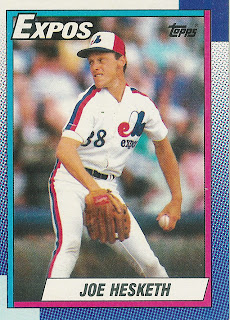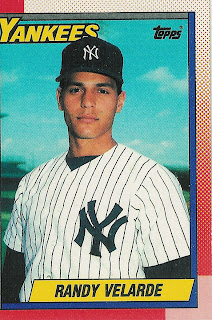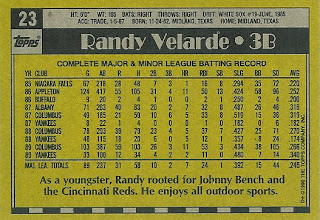Tony Fossas was a left handed specialist who's job was to get lefties.
Why he was so effective against lefties was summed up by then Cardinals manager Mike Jorgensen who said "He's got a little, what do you call it, a Frisbee slider or something, that left-handed hitters don't pick up." Adapting a sidearm motion he said it helped because "I hide the ball well and I have a very good slider, and my control is good." Fossas spent years in the minors some of which he described as "pitiful" and only made his debut in 1988 at the age of 30. 11 years in the minors after being drafted by the Twins in 1978 he spent his first 9 years as a starter but a move to the bullpen moved his career along. He also lost 20 pounds and no longer did he "feel like a beach ball on the mound." Fossas spent 12 years in the major and like many relief specialist bounced from team to team. Debuting with Texas in 88 the next two years were spent in Milwaukee followed by four in Boston, 3 in St. Louis and quick cups of coffee with Seattle, the Cubs, back to the Rangers and five games with the Yankees where his career ended in 1999.
Fossas one job was to get left-handed batters out and he did that very well in his career. Just look at the numbers of some of the great left-handed batters and how they hit off of him. Not real well while righties hit him hard.
Batter AB H 2B 3B HR BB IBB SO HBP SH SF AVG OBP SLG
Wade Boggs 17 3 0 0 0 2 0 3 0 0 0 .176 .263 .176
Barry Bonds 13 3 1 0 1 2 0 5 0 0 0 .231 .333 .538
George Brett 18 3 1 0 0 3 0 2 0 0 0 .167 .286 .222
Carlton Fisk 5 1 0 0 0 0 0 0 0 0 0 .200 .200 .200
Ken Griffey 24 3 0 0 1 1 0 7 0 0 0 .125 .160 .250
Tony Gwynn 10 2 0 0 1 0 0 1 0 0 0 .200 .200 .500
Rickey Henderson 6 2 0 1 0 0 0 1 0 0 0 .333 .333 .667
Chipper Jones 9 3 1 0 0 2 0 4 0 0 0 .333 .455 .444
Jeff Kent 4 1 0 0 0 1 0 1 0 0 0 .250 .400 .250
Jeffrey Leonard 4 3 0 0 1 0 0 0 0 0 0 .750 .750 1.500
Edgar Martinez 4 2 0 0 0 0 0 0 0 0 0 .500 .500 .500
Don Mattingly 10 2 0 0 0 6 1 1 0 0 1 .200 .471 .200
Fred McGriff 29 6 1 0 0 1 0 9 0 0 0 .207 .233 .241
Kirby Puckett 5 3 2 0 1 0 0 0 0 0 0 .600 .600 1.600
Tim Raines 9 3 0 0 0 0 0 0 0 0 0 .333 .333 .333
Cal Ripken 6 1 0 0 0 1 0 1 0 0 0 .167 .286 .167
Sammy Sosa 3 2 1 0 1 1 1 0 0 1 0 .667 .750 2.000
Jim Thome 4 2 1 0 0 0 0 1 0 0 0 .500 .500 .750
Alan Trammell 6 2 0 0 1 5 2 0 0 0 0 .333 .636 .833
Lou Whitaker 11 5 2 0 0 0 0 0 0 1 0 .455 .455 .636
Bernie Williams 7 3 0 0 1 0 0 1 0 0 0 .429 .429 .857























